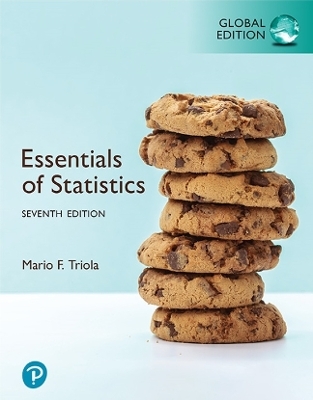
Statistical Methods in Customer Relationship Manag ement
John Wiley & Sons Inc (Hersteller)
978-1-118-34921-2 (ISBN)
- Keine Verlagsinformationen verfügbar
- Artikel merken
Academics and practitioners involved in the area of CRM as well as instructors of applied statistics and quantitative marketing courses will benefit from this book.
Dr. V. Kumar, Center for Excellence in Brand and Customer Management (CEBCM), and Director of the PhD Program in Marketing, J. Mack Robinson College of Business, Georgia State University, Atlanta, USA. Dr. J. Andrew Petersen, Marketing and Assistant Director for the Center of Integrated Marketing and Sales (CIMS), Kenan-Flagler Business School, University of North Carolina at Chapel Hill, USA.
Preface ix 1 Customer relationship management 1 1.1 Introduction 1 1.2 What is CRM? 2 1.3 What is needed to implement CRM strategies? 3 1.3.1 Database 3 1.3.2 Technology 6 1.3.3 Metrics 7 1.4 Analytical methods 9 1.5 Conclusion 9 References 10 2 CRM in action 11 2.1 Introduction 11 2.2 The importance of customer acquisition 13 2.3 The significance of customer retention 15 2.4 The impact of customer churn 17 2.5 The benefits of customer win-back 18 2.6 Conclusion 20 References 20 3 Customer acquisition 22 3.1 Introduction 22 3.1.1 Data for empirical examples 27 3.2 Response probability 28 3.2.1 Empirical example: Response probability 32 3.2.2 How do you implement it? 34 3.3 Number of newly acquired customers and initial order quantity 35 3.3.1 Empirical example: Number of newly acquired customers 37 3.3.2 How do you implement it? 38 3.3.3 Empirical example: Initial order quantity 39 3.3.4 How do you implement it? 42 3.4 Duration/time 42 3.4.1 Empirical example: Duration/time 44 3.4.2 How do you implement it? 46 3.5 Firm's performance (LTV, CLV, and CE) 47 3.5.1 Empirical example: Firm's performance 49 3.5.2 How do you implement it? 52 3.6 Chapter summary 52 Customer acquisition -- SAS code 53 Customer acquisition -- SAS output 55 References 61 4 Customer retention 63 4.1 Introduction 63 4.1.1 Data for empirical examples 66 4.2 Repurchase or not (stay or leave) 69 4.2.1 Will a customer repurchase? 69 4.2.2 When will a customer no longer repurchase? 71 4.2.3 Empirical example: Repurchase or not (stay or leave) 73 4.2.4 How do you implement it? 78 4.3 Lifetime duration 78 4.3.1 Empirical example: Lifetime duration 83 4.3.2 How do you implement it? 85 4.4 Order quantity and order size 85 4.4.1 How much (in $) will a customer order? 85 4.4.2 How many items will a customer order? 86 4.4.3 What is the average order size? 87 4.4.4 Empirical example: Order quantity 87 4.4.5 How do you implement it? 91 4.5 Cross-buying 91 4.5.1 Empirical example: Cross-buying 92 4.5.2 How do you implement it? 97 4.6 SOW 97 4.6.1 Empirical example: SOW 98 4.6.2 How do you implement it? 101 4.7 Profitability (CLV) 102 4.7.1 Empirical example: Profitability (CLV) 103 4.7.2 How do you implement it? 105 4.8 Chapter summary 105 Customer retention -- SAS code 106 Customer retention -- SAS output 111 References 119 5 Balancing acquisition and retention 121 5.1 Introduction 121 5.1.1 Data for empirical examples 122 5.2 Acquisition and retention 124 5.2.1 Empirical example: Balancing acquisition and retention 128 5.3 Optimal resource allocation 137 5.3.1 How do you implement it? 140 5.4 Chapter summary 141 Balancing acquisition and retention -- SAS code 142 Balancing acquisition and retention -- SAS output 144 References 147 6 Customer churn 149 6.1 Introduction 149 6.1.1 Data for empirical examples 150 6.2 Customer churn 151 6.2.1 Empirical example: Customer churn 156 6.2.2 How do you implement it? 161 6.3 Chapter summary 161 Customer churn -- SAS code 162 Customer churn -- SAS output 163 References 164 7 Customer win-back 166 7.1 Introduction 166 7.1.1 Data for empirical examples 167 7.2 Customer win-back 168 7.2.1 Empirical example: Customer win-back 169 7.2.2 How do you implement it? 178 7.3 Chapter summary 179 Customer win-back -- SAS code 180 Customer win-back -- SAS output 182 References 185 8 Implementing CRM models 186 8.1 Introduction 186 8.2 CLV measurement approach 187 8.3 CRM implementation at IBM 190 8.3.1 IBM background 190 8.3.2 Implementing a CLV management framework at IBM 191 8.4 CRM implementation at a B2C firm 202 8.4.1 The focal firm background 202 8.4.2 Implementing the CLV management framework at a fashion retailer 202 8.4.3 Process to implement the CLV management framework at a fashion retailer 203 8.5 Challenges in implementing the CLV management framework 219 8.5.1 Challenges in data collection and internal collaboration 219 8.5.2 Challenges in implementing the customer-centric approach 220 References 222 9 The future of CRM 223 9.1 Introduction 223 9.2 Social media 223 9.3 Mobile marketing 226 9.4 Customized marketing campaigns 227 9.5 Conclusion 229 References 229 Appendix A: Maximum likelihood estimation 230 Appendix B: Log-linear model--an introduction 232 Appendix C: Vector autoregression modeling 235 Appendix D: Accelerated lifetime model 241 Appendix E: Type-1 Tobit model 244 Appendix F: Multinomial logit model 246 Appendix G: Survival analysis -- an introduction 249 Appendix H: Discrete-time hazard 252 Appendix I: Proportional hazards model 254 Appendix J: Random intercept model 257 Appendix K: Poisson regression model 260 Appendix L: Negative binomial regression 262 Appendix M: Estimation of Tobit model with selection 265 Index 267
| Erscheint lt. Verlag | 7.8.2012 |
|---|---|
| Verlagsort | New York |
| Sprache | englisch |
| Maße | 150 x 250 mm |
| Gewicht | 666 g |
| Themenwelt | Mathematik / Informatik ► Mathematik ► Statistik |
| Wirtschaft ► Betriebswirtschaft / Management ► Marketing / Vertrieb | |
| ISBN-10 | 1-118-34921-0 / 1118349210 |
| ISBN-13 | 978-1-118-34921-2 / 9781118349212 |
| Zustand | Neuware |
| Haben Sie eine Frage zum Produkt? |
aus dem Bereich
